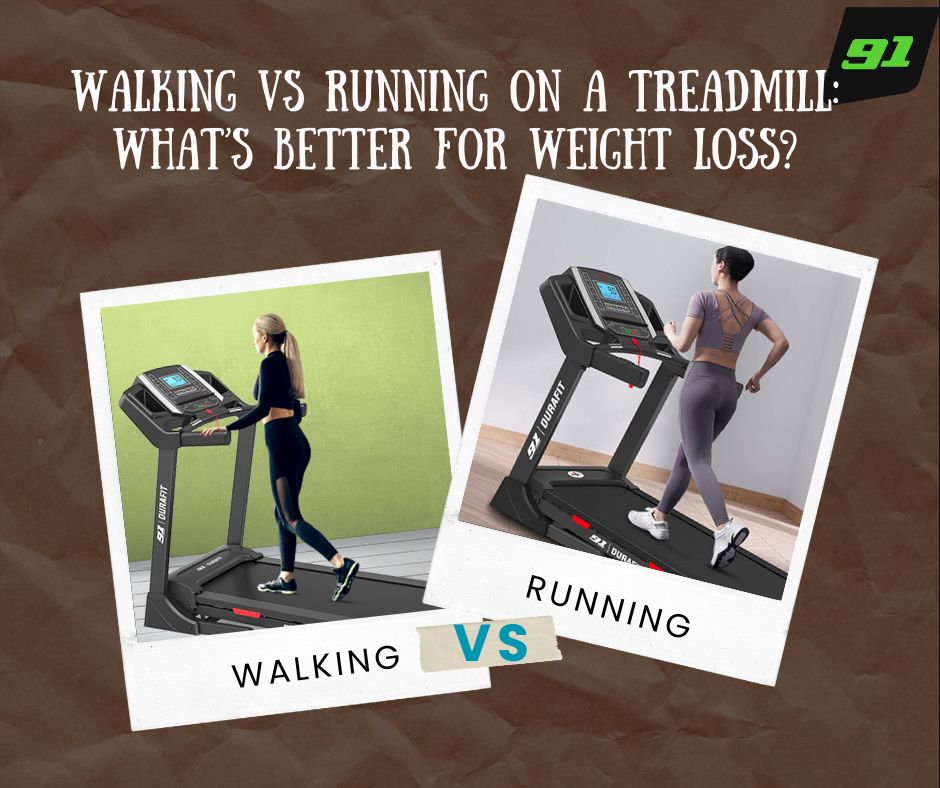When it comes to weight loss, cardio exercise is frequently the first thought that comes to mind. Treadmills, common in most gyms and homes, are a simple and effective technique to get your heart rate up. But if you want to lose weight, you might ask if it’s better to walk or run on the treadmill. The solution isn’t as simple as you may expect. Let’s get into the details.
The Case for Walking
Walking, specifically at a brisk pace, provides numerous weight-loss benefits. It’s a low-impact workout, so it’s easier on your joints than jogging. This makes it a long-term alternative for people of various fitness levels, especially beginners, those recuperating from injury, and those with chronic joint concerns.
Calories Burned Walking
Walking on a best treadmill at a moderate pace (3.5-4 miles per hour) burns between 250 and 350 calories per hour, depending on your weight, speed, and incline. Adding an inclination can greatly increase your calorie burn without the need to speed up, making walking even more efficient.
Benefits Beyond Calorie Burn
Walking on a regular basis can help you increase endurance, improve your cardiovascular health, and boost your mood. A walking regimen is easier to keep with over time because it does not leave you feeling weary or hurting. Walking can also be more convenient for your lifestyle, as you can multitask by listening to podcasts, watching TV, or even taking work calls.

The Case for Running
Running is often regarded as one of the most effective forms of cardio. It burns more calories in less time and greatly increases your heart rate, which can lead to faster fat reduction over time.
Calories Burned Running
Running at a moderate speed (around 6 miles per hour) can burn between 600 and 800 calories per hour. The faster you run, the more calories you burn. Furthermore, running causes the “afterburn effect,” or excess post-exercise oxygen consumption (EPOC), in which your body continues to burn calories at a greater rate even after your activity has ended.
Benefits Beyond Calorie Burn
Running not only speeds up weight reduction, but it also strengthens the heart, expands lung capacity, and increases muscle endurance in the legs. It can also save you time — a highly efficient workout can be completed in 30 minutes or less, which is ideal if you have a hectic schedule.
Walking vs Running: Which is Better?
Now, to the point: which one is better for weight loss?
It relies on a number of factors:
- Your fitness level: If you’re new to exercise, walking could be a safer and more sustainable option. Jumping right into running can result in burnout or injury.
- Consistency: Long-term consistency is more important for weight loss than high-intensity bursts. If you’re more likely to keep to a walking program multiple times each week, it may be more beneficial in the long run than infrequent runs.
- Intensity and duration: While running burns more calories per minute, walking for an extended length of time can match or even exceed the calorie burn of a brief run.
- Risk of injury: Running increases the risk of stress injuries such as shin splints, knee soreness, and tendonitis, particularly if you raise the intensity too soon or do not use correct footwear.
- Lifestyle and enjoyment: Some people enjoy the excitement of running, while others prefer the meditative pace of strolling. Enjoying your workout is important since it raises the likelihood that you’ll continue doing it.
The Power of Combining Both
You don’t have to choose one. Walking and running together, sometimes known as interval training or walk-run intervals, can be incredibly efficient weight loss exercises.
For example, you could alternate between two minutes of brisk walking and one minute of sprinting. This strategy burns a lot of calories, makes the workout more exciting, and is gentler on the joints than continuous running. Furthermore, research indicates that interval training might raise metabolism and improve cardiovascular health more effectively than steady-state cardio.
Tips for Treadmill Success
Whether you walk, run, or do both, here are some strategies to get the most of your treadmill sessions:
- Use the incline: Adding an incline simulates hill climbing, increases calorie expenditure, and works your glutes, hamstrings, and calves harder.
- Maintain proper posture: Keep your shoulders back, head up, and core engaged.
- Don’t cling to the rails: This lowers the effectiveness of the workout.
- Change up your routine: Changing your speed and incline keeps your body engaged and prevents plateauing.
- Wear correct shoes: Invest in high-quality walking or running shoes to preserve your joints and increase comfort.
Conclusion
At Ninety One, we know that both walking and running on a treadmill can help you lose weight. Running burns calories faster but increases the chance of injury. Walking is less taxing on the body, more accessible, and environmentally friendly. Adding an inclination to your stroll increases calorie burn while minimizing impact. Finally, the best workout is one that you enjoy, is suitable for your lifestyle, and can be maintained regularly over time.
FAQs
1. Is walking on a treadmill more beneficial than jogging for weight loss?
Yes, walking can be beneficial, especially with an inclination and longer workout durations.
2. Does running on a treadmill burn more calories than walking when it comes to losing weight?
Yes, running burns many more calories per minute than walking.
3. Will treadmill walking at an incline be as efficient as running for weight loss?
Walking up a steep hill can certainly compete with running in terms of calorie burn.
4. Should beginners begin by walking or running on a treadmill for weight loss?
Walking is a good place for beginners to start because it builds endurance and reduces injury risk.
5. Is it better to walk and run on a treadmill to lose weight?
Yes, alternating between walking and running increases calorie burn and minimizes injury risk.
This post was created with our nice and easy submission form. Create your post!





